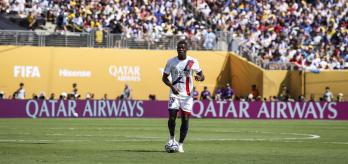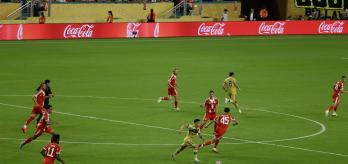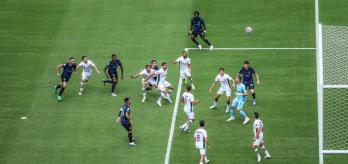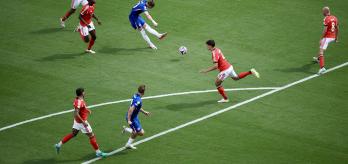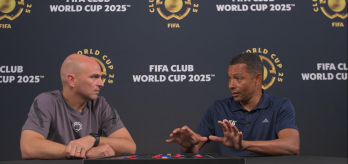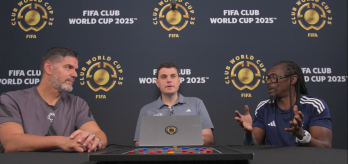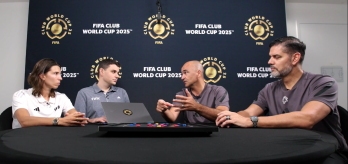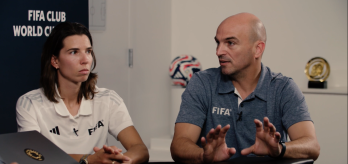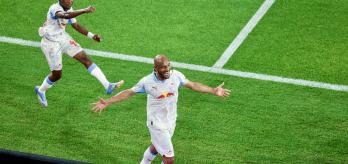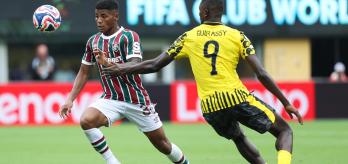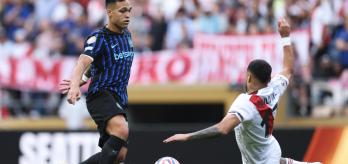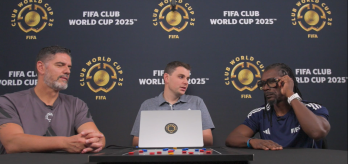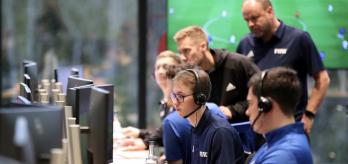FIFA’s Technical Study Group (TSG) are always looking to identify tactical innovations and in this article, TSG expert and Portugal men’s national team head coach Roberto Martínez highlights how Juventus head coach Igor Tudor, a former centre-back himself, has redefined the role and elevated it to a whole new level during FIFA Club World Cup 2025™.
“The idea of the coach to use the centre-back positions to provide a tactical advantage high up the pitch, with equilibrium, is magic. It’s risky; they create overloads in wide areas and open up unexpected passing lanes in the final third. This concept really elevates the role of centre-backs into the focal point of the team in places where they are just not expected to be when their team is attacking,” he added.
Centre-backs attacking output
Setting up in a 3-4-3 structure in their opening match against Al Ain’s 5-3-2, the impressive aspect of the Juventus approach was the emphasis, responsibility and freedom that both left centre-back Lloyd Kelly (6) and right centre-back Pierre Kalulu (15) were given to engage in wide area attacking play at the same time.
As Martínez explains, “In possession, both Kelly and Kalulu were the players that created the numerical advantage in the wide areas, and most surprisingly, in the final third. Using switches of play, the centre-backs and the centre-midfielders rotated on both sides of the pitch, creating overloads against Al Ain’s wing-backs, meaning both centre-backs were often free to affect play in the vicinity of the penalty area.”
Kelly and Kalulu contributed to attacking actions, such as receptions in the penalty area, crosses, key passes and assists, during the game, but the advanced movement and engagement by both centre-backs was a well-worked concept rather than an instinctive idea of the players.
Martínez uses the clips below to highlight how both centre-backs work the pitch from a low and mid build-up phase and advance in relation to the progression of the ball.
“It’s so intentional, and they have the quality to run with the ball and to execute decisive passes with minimal touches. Using a switch of play, they both continue to progress as the ball advances through the thirds, and most surprisingly, in the final third, where Juventus create the overload because they are not expected to be in these positions by the defending team. It is orchestrated, it is played from principles and triggers, and it is symmetrical.”
Contrasting Attacking Movement
Although both centre-backs joined the attack, they had contrasting movements which each served a different purpose. Left centre-back Kelly had two ways in which he affected play: by looking to play on the outside of the opposition wing-back to overlap; and by getting to the byline to deliver driven crosses across the box. Incredibly, in this match, he had five receptions in the opposition’s penalty area from open play (more than any other player in this game), and 11 receptions between the opposition’s midfield and defensive lines.
Right centre-back Kalulu generally tended to cut inside and work the inner channel in front of the penalty area, engaging in combination play and creating overloads. His occupation of this space allowed Francisco Conceição to work more freely in the outside channel, where he could isolate defenders in 1v1 situations.
The technique of both players to play so competently in these innovative roles and areas is highlighted by the fact that they were ranked second and third in the game for completed line-breaking passes (Kelly 94.7% and Kalulu 94.1%).
“The strategic role of both centre-backs is deliberate, and head coach Igor Tudor allows them to be centre stage of his strategy. The intention for both is similar because they play high symmetrically, but it is the profile of both players (their individual attributes) that allows their effectiveness and impact to look slightly different," Martínez added.
Positional rotation and rest defence
To allow two centre-backs advance with confidence to play in the final third, we must consider how Juventus set up their offensive balance/rest defence. The discipline of the central centre-back, Nicolò Savona (37), and his relationship with the centre-midfielders was fundamental to the success of this daring strategy, as Martínez explains.
“There were two main reasons for the success of this tactic. First, when Kelly or Kalulu were in the opposition’s final third, their midfielders covered the supporting roles to maintain a solid, supportive rest-defence structure.
“And second, the influence of the coach, Igor Tudor, is so important because he is happy for his rest defence players to be 1v1 with opposition forward players. This takes courage because both centre-backs can play with the confidence in the final third, knowing that other players are covering in rest defence. They are young and brave, and that comes from the coach.”
In the clips below, we see examples of the player rotations and role changes that allow the centre-backs to advance, while maintaining numerical balance at the back.
Summary
For Martínez, this signature tactical approach from Tudor is more feasible to implement at club level and would be more challenging for national team level.
“The synchronisation needed within the team to cover for two advancing centre-backs, or being able to support them in training to be comfortable with that, would be too challenging in the time that you have to prepare the team, as you often only have three sessions to prepare for an international game.
“The influence of the coach, Igor Tudor, cannot be underestimated here, especially as a former centre-back. Normally, a coach solidifies and perfects the role they used to play, but he is evolving it into a position that can win games. This is taking the in-possession role of the centre-backs in open play to a whole new level.”







